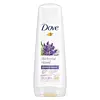What's inside
What's inside
 Key Ingredients
Key Ingredients

 Benefits
Benefits

 Concerns
Concerns

 Ingredients Side-by-side
Ingredients Side-by-side

Water
Skin ConditioningSodium Laureth Sulfate
CleansingCocamidopropyl Betaine
CleansingParfum
MaskingSodium Chloride
MaskingSodium Benzoate
MaskingDimethiconol
EmollientCarbomer
Emulsion StabilisingMenthol
MaskingCitric Acid
BufferingGuar Hydroxypropyltrimonium Chloride
Skin ConditioningTea-Dodecylbenzenesulfonate
CleansingTea-Sulfate
BufferingDisodium EDTA
Phenoxyethanol
PreservativeCaffeine
Skin ConditioningSodium Hydroxide
BufferingPPG-6
Skin ConditioningLimonene
PerfumingLinalool
PerfumingWater, Sodium Laureth Sulfate, Cocamidopropyl Betaine, Parfum, Sodium Chloride, Sodium Benzoate, Dimethiconol, Carbomer, Menthol, Citric Acid, Guar Hydroxypropyltrimonium Chloride, Tea-Dodecylbenzenesulfonate, Tea-Sulfate, Disodium EDTA, Phenoxyethanol, Caffeine, Sodium Hydroxide, PPG-6, Limonene, Linalool
Water
Skin ConditioningCetearyl Alcohol
EmollientStearamidopropyl Dimethylamine
EmulsifyingParfum
MaskingBehentrimonium Chloride
PreservativeGlycerin
HumectantDimethicone
EmollientDipropylene Glycol
HumectantLactic Acid
BufferingSodium Chloride
MaskingDisodium EDTA
Amodimethicone
Cetrimonium Chloride
AntimicrobialPEG-7 Propylheptyl Ether
Emulsion StabilisingVitis Vinifera Seed Oil
EmollientLinum Usitatissimum Seed Oil
PerfumingPrunus Amygdalus Dulcis Oil
Skin ConditioningCocos Nucifera Oil
MaskingMethylchloroisothiazolinone
PreservativeMethylisothiazolinone
PreservativeLavandula Angustifolia Flower Extract
CleansingAlpha-Isomethyl Ionone
PerfumingCoumarin
PerfumingLinalool
PerfumingWater, Cetearyl Alcohol, Stearamidopropyl Dimethylamine, Parfum, Behentrimonium Chloride, Glycerin, Dimethicone, Dipropylene Glycol, Lactic Acid, Sodium Chloride, Disodium EDTA, Amodimethicone, Cetrimonium Chloride, PEG-7 Propylheptyl Ether, Vitis Vinifera Seed Oil, Linum Usitatissimum Seed Oil, Prunus Amygdalus Dulcis Oil, Cocos Nucifera Oil, Methylchloroisothiazolinone, Methylisothiazolinone, Lavandula Angustifolia Flower Extract, Alpha-Isomethyl Ionone, Coumarin, Linalool
Ingredients Explained
These ingredients are found in both products.
Ingredients higher up in an ingredient list are typically present in a larger amount.
Disodium EDTA plays a role in making products more stable by aiding other preservatives.
It is a chelating agent, meaning it neutralizes metal ions that may be found in a product.
Disodium EDTA is a salt of edetic acid and is found to be safe in cosmetic ingredients.
Learn more about Disodium EDTALinalool is a fragrance and helps add scent to products. It's derived from common plants such as cinnamon, mint, citrus, and lavender.
Like Limonene, this ingredient oxidizes when exposed to air. Oxidized linalool can cause allergies and skin sensitivity.
This ingredient has a scent that is floral, spicy tropical, and citrus-like.
Learn more about LinaloolParfum is a catch-all term for an ingredient or more that is used to give a scent to products.
Also called "fragrance", this ingredient can be a blend of hundreds of chemicals or plant oils. This means every product with "fragrance" or "parfum" in the ingredients list is a different mixture.
For instance, Habanolide is a proprietary trade name for a specific aroma chemical. When used as a fragrance ingredient in cosmetics, most aroma chemicals fall under the broad labeling category of “FRAGRANCE” or “PARFUM” according to EU and US regulations.
The term 'parfum' or 'fragrance' is not regulated in many countries. In many cases, it is up to the brand to define this term.
For instance, many brands choose to label themselves as "fragrance-free" because they are not using synthetic fragrances. However, their products may still contain ingredients such as essential oils that are considered a fragrance by INCI standards.
One example is Calendula flower extract. Calendula is an essential oil that still imparts a scent or 'fragrance'.
Depending on the blend, the ingredients in the mixture can cause allergies and sensitivities on the skin. Some ingredients that are known EU allergens include linalool and citronellol.
Parfum can also be used to mask or cover an unpleasant scent.
The bottom line is: not all fragrances/parfum/ingredients are created equally. If you are worried about fragrances, we recommend taking a closer look at an ingredient. And of course, we always recommend speaking with a professional.
Learn more about ParfumChances are, you eat sodium chloride every day. Sodium Chloride is also known as table salt.
This ingredient has many purposes in skincare: thickener, emulsifier, and exfoliator.
You'll most likely find this ingredient in cleansers where it is used to create a gel-like texture. As an emulsifier, it also prevents ingredients from separating.
There is much debate on whether this ingredient is comedogenic. The short answer - comedogenic ratings don't tell the whole story. Learn more about comegodenic ratings here.
The concensus about this ingredient causing acne seems to be divided. Research is needed to understand if this ingredient does cause acne.
Scrubs may use salt as the primary exfoliating ingredient.
Learn more about Sodium ChlorideWater. It's the most common cosmetic ingredient of all. You'll usually see it at the top of ingredient lists, meaning that it makes up the largest part of the product.
So why is it so popular? Water most often acts as a solvent - this means that it helps dissolve other ingredients into the formulation.
You'll also recognize water as that liquid we all need to stay alive. If you see this, drink a glass of water. Stay hydrated!
Learn more about Water